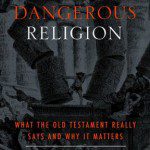 The first chapter of Amir D. Aczel’s recent book Why Science Does Not Disprove God gives a brief (very brief!) overview of the development of religion, from the very early fertility representations and cave drawings tens of thousands of years ago to the emergence of Christianity, Islam, Hinduism and the like. He points to the many examples of so-called “Venus figurines” found all over Europe and the Middle East and to cave paintings and images and sculptures of bulls thought to be representative of fertility and the forces of nature. The image to the right (from Wikipedia) was found in Samarra, is now in the Louvre, and dates to some 8000 years ago.
The first chapter of Amir D. Aczel’s recent book Why Science Does Not Disprove God gives a brief (very brief!) overview of the development of religion, from the very early fertility representations and cave drawings tens of thousands of years ago to the emergence of Christianity, Islam, Hinduism and the like. He points to the many examples of so-called “Venus figurines” found all over Europe and the Middle East and to cave paintings and images and sculptures of bulls thought to be representative of fertility and the forces of nature. The image to the right (from Wikipedia) was found in Samarra, is now in the Louvre, and dates to some 8000 years ago.
As agriculture developed and human settlements became more permanent other forms of religious observance appeared – with many of the most interesting sites located in Mesopotamia, Turkey, and Israel – a number of fascinating sites are found around Jericho and along the Jordan river. Ancestor worship with plaster covered, painted skulls also become part of the picture.
Making the connection with science Aczel turns to Max Jammer’s work in Concepts of Force and sees ancient divinities as “abstractions of forces seen in nature, mixed with human characteristics and an overlay of an emerging morality – punishments are meted out by these forces for “sins” such as theft and murder.” … “Early science – i.e. an understanding of nature and its forces goes hand in hand with the development of spiritual practice and moral code.” (p. 39) The monotheism of the Old Testament reflects a consolidation of the various gods represent local forces of nature into a single deity – as an example, the ba’als (local “lords”) become consolidated into one supreme divine creator.
Aczel continues on through the development of Islam and the Catholic church, Maimonides, and turns to religious observance in other parts of the world as well. He has an interesting bit on a Hindu temple and on native American cultures.
Turning to the part of primary interest for our discussion, Aczel’s sketch of the development of Jewish and Christian thought reflects a lack of familiarity with the Scripture (although not much more so than many Christians). In particular Aczel wishes to counter the proposal that all religious belief is unnecessary for and even destructive of morality. He notes that “already in the second century A.D. the Talmudic sage Hillel the Elder famously summarized the message of the Old Testament in one sentence: “what is hateful to you, do not do to your fellow man; this is the entire Torah, the rest is commentary.” (p. 48) From what I find Hillel was first century BC not second century AD, but this is a minor issue. The point remains that morality – even morality of which the New Atheists approve – is deeply embedded in the development of religious thinking in the Judeo-Christian tradition. Aczel doesn’t bring it up – but the Jesus Creed, love the Lord your God with all your heart, mind, soul, and strength and love your neighbor as yourself, is a profound illustration of the moral foundation of Christian (and Jewish) religious belief.
Aczel’s very cursory sketch of early religion raises some questions that I find interesting to consider, especially in light of Scot’s current series of posts looking at James Emery White’s The Rise of the Nones and Martin Thielen’s book, The Answer to Bad Religion is not No Religion.
The post yesterday, The Perfect Storm against the Faith, summarizes White as saying that the storm of knowledge – Copernicus (the cosmological attack), Darwin (the biological attack), and Freud (the psychological attack) – led more to question faith and the bad religion of the present (mixing politics, guns, and money with religion) is a second storm which serves to undermine faith. Theilen’s response is primarily to the latter storm, but elements of the first play a role as well.
 I think that White, like so many Christians, is overly simplistic in his summary of the attack of knowledge on Christian faith. I live in a segment of American culture where the so-called “nones” dominate – representing a clear majority of my colleagues (click on the image to the right for a summary). We can’t bury our heads in the sand or go back to a simple ignorance. We have to wrestle with the questions. Science does not disprove religion, but our broadened knowledge may impact our understanding of religion.
I think that White, like so many Christians, is overly simplistic in his summary of the attack of knowledge on Christian faith. I live in a segment of American culture where the so-called “nones” dominate – representing a clear majority of my colleagues (click on the image to the right for a summary). We can’t bury our heads in the sand or go back to a simple ignorance. We have to wrestle with the questions. Science does not disprove religion, but our broadened knowledge may impact our understanding of religion.
What impact does the evidence for ancient human cultures and spirituality have on our understanding of Christian faith?
If you wish to contact me directly you may do so at rjs4mail [at] att.net.
If interested you can subscribe to a full text feed of my posts at Musings on Science and Theology.











